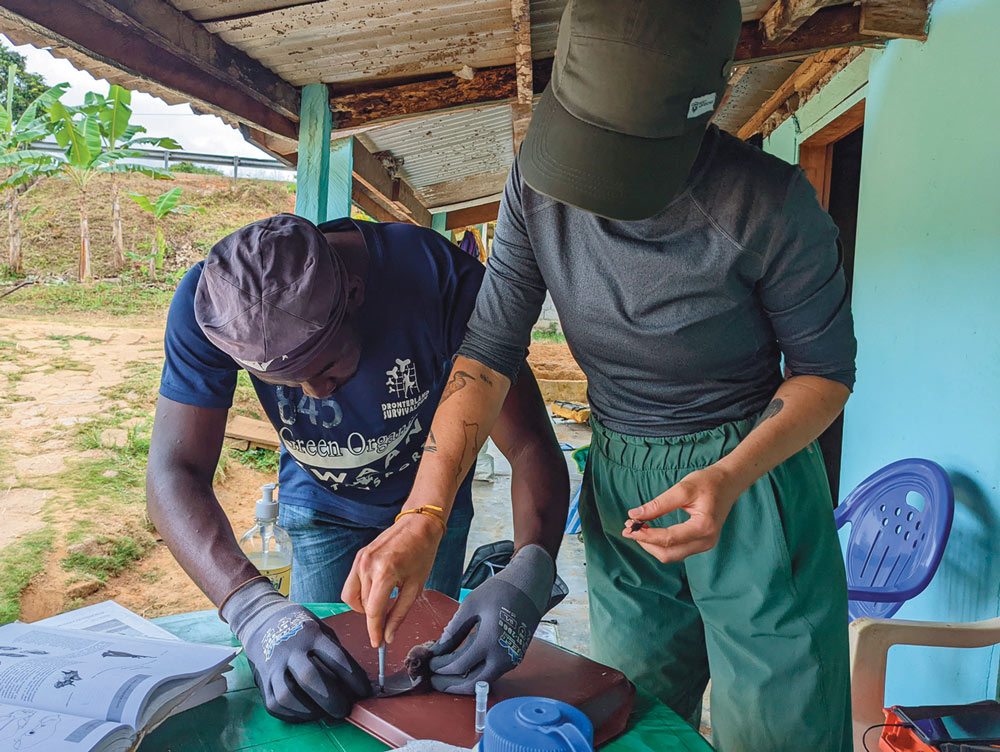
From the Mountains of Cameroon to the Labs of Chicago

When she returned to Oregon, Grunwald began raising funds to conduct a biodiversity survey, intending to involve as many Cameroonian students as possible in her Ph.D. research. After connecting with Cameroon’s top bat biologist—Eric Moise Bakwo Fils, Ph.D.—she was introduced to Franck Meyo, who was equally enthusiastic about bats. Meyo had just completed his master’s degree at the University of Douala and is now working towards his doctorate at the same institution.
When the fieldwork wrapped, molecular analysis followed. In Cameroon, conducting such analysis can be challenging due to a lack of access to the necessary laboratory technology and funding to test field samples onsite or send tissues overseas for genetic testing. Aware of the equity issues surrounding molecular work, Grunwald set out to ensure Meyo could complete the molecular work associated with their field studies, leveraging her access to these resources to extend them to Meyo’s work.

The journey of a dedicated scientist
“Supporting researchers like Franck is vital; their expertise and lived experience are indispensable for the conservation of Cameroon’s bats,” Grunwald says.
The waiting game began after Grunwald secured additional funding from the Field Museum to cover lab expenses. Meyo waited nearly a year to receive his visa to travel to the United States. Staying optimistic, Meyo was not deterred by the lengthy wait, saying it was “exciting because it gives us the time to collect more samples.”
In November 2023, Meyo and Grunwald reunited in Chicago to conduct molecular analyses in the Pritzker Lab at the Field Museum. As Meyo continues his doctoral work, his passion for bats grows. “This is maybe the start of a long story,” he says.